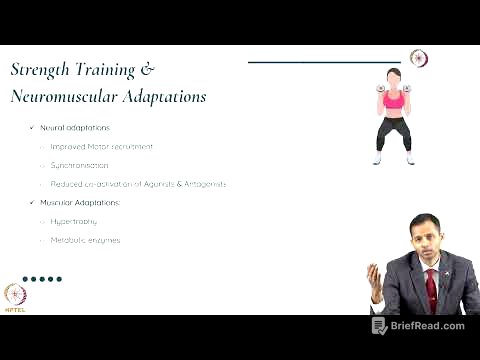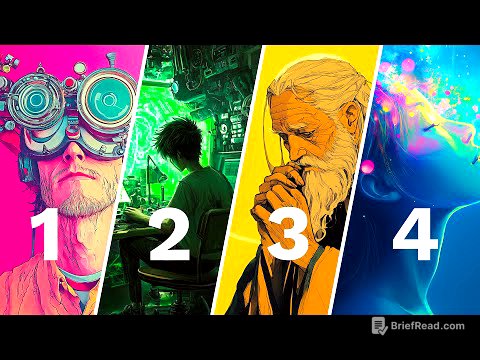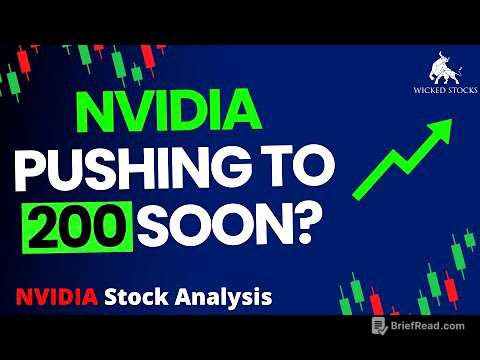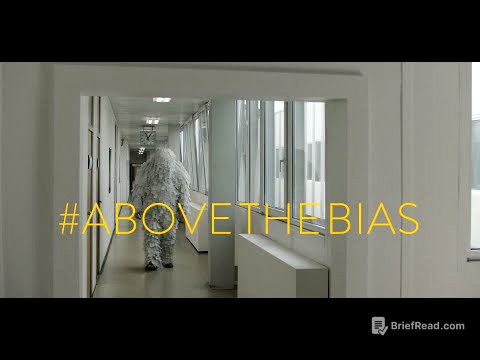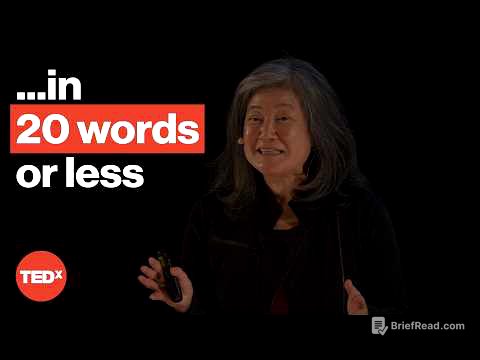TLDR;
This video provides a comprehensive guide to building a successful brand, covering branding, content strategy, team building, and monetization. It emphasizes intentionality, consistency, and building trust with your audience.
- Branding: Focus on intentional associations and actions.
- Content: Create valuable, engaging content tailored to specific platforms.
- Team: Build a strong team culture and empower team members.
- Monetization: Prioritize trust and long-term relationships over short-term gains.
Intro [0:00]
The video introduces two paths: the forgettable brand and the intentional brand. The intentional brand owns its associations, builds trust, and drives decisions. This course aims to transition viewers from the first path to the second, helping them scale their brands by focusing on branding, content strategy, team building, and monetization.
What Brand Is [1:06]
Branding is defined as the intentional pairing of relevant things done consistently, leading to brand recognition when the audience inherently associates those things together. Examples include Nike with Michael Jordan (athletic greatness), Gary Vaynerchuk with content, and Harley-Davidson with freedom. The goal is to deliberately pair your brand with desired associations, making branding operational and actionable. The video encourages viewers to download accompanying worksheets and follow along.
Define Your Brand [3:42]
Defining your brand involves intentional control rather than letting the audience define it for you. The first step is defining your desired outcome and reverse engineering from there using the brand journey framework, which consists of four questions: What is your desired outcome? What do you have to be known for to achieve that outcome? What do you have to do to be known for that? What do you have to learn to do that? Also, it's important to define desired associations and what you don't want to be associated with to protect your brand from dilution.
Position Your Brand [12:09]
Positioning your brand involves finding and owning the gap in your industry, whether through unique information, philosophy, or personality. Ask yourself what existing creators are saying that you disagree with and how you can bring a fresh perspective. Share your unique story, highlighting pivotal moments, challenges overcome, and unique experiences that have shaped your perspective. Address audience skepticism and objections proactively in your content to build trust and credibility. Be human by sharing both wins and losses, and listen to your audience to refine your positioning.
Brand Story Framework [26:24]
The brand story framework consists of three parts: the catalyst (why your brand exists), the core truth (what makes you different), and the proof (how you reinforce your identity). The catalyst identifies the need for change or a gap in the market. The core truth highlights your unique beliefs and personality. The proof reinforces your identity through consistent actions and credibility. By nailing these elements, your brand will have loyalty.
Pick Your Topic(s) [33:12]
Start narrow by focusing on one specific thing to build early trust and credibility. As your experience and knowledge expand, you can broaden your topics. Ensure you know what you're talking about before sharing it and that you get consistent engagement and positive feedback before expanding. Take on adjacent topics and pay attention to what your audience is asking for. When expanding, never lose sight of your core identity and consider nostalgic plays to reconnect with your roots. Expand in layers, not leaps, and remember that these are guidelines, not rules. Focus on what you're passionate about, what resonates with your audience, and what will cause them to change their actions the most. Emphasize your one thing while using other interests to round yourself out and connect with your audience.
Section 2: Content [51:02]
Content amplifies your brand, and the strategy should be built like a personal training program, focusing on long-term sustainability. Avoid trying to replicate top creators immediately; instead, determine what you can consistently stick with to achieve results.
Choose Your Content Medium [52:49]
Choose a content medium that plays to your strengths while ensuring long-term sustainability. The four mediums discussed are written content (best for LinkedIn, Twitter, Facebook, email, newsletters, ebooks, articles), video content (YouTube, TikTok, Instagram, Facebook Reels), audio content (podcasts), and graphic/design content (infographics, carousels, PDFs). Video content offers the highest leverage due to its repurposing potential.
Choosing the Right Platforms [1:08:28]
Prioritize two to three platforms to avoid single-channel risk and emphasize original content. Rotate focus between these platforms, putting more resources toward one at a time while maintaining the others. Start where you feel comfortable and where your audience is most likely to be. Track performance and conversions to determine which platforms are most effective.
Your Posting Cadence [1:23:56]
Determine your posting cadence by starting with the highest leverage platform and increasing volume for speed and learnings. Use the accordion method, posting high quantity content to understand what your audience deems as quality, then compressing the accordion to put more effort into each piece. Avoid the perfect post trap and prioritize speed over perfection. Use a content pillar approach, mining long-form content for short-form clips and quotes. Scale by platform, focusing on one at a time and rotating between them. Make your content sustainable by playing for the long term, building a simple content machine, removing yourself from the execution, systematizing repurposing, and defining your energy rhythm.
Storytelling In Your Content [2:08:12]
Utilize storytelling in your content to keep people hooked and create an emotional connection with your audience. The storytelling framework includes the hook (grabbing attention), the problem (setting up the stakes), the journey (how you overcame it), the lesson (making it useful for your audience), and the call to action (telling people to take action). Tell origin stories, failure stories, and success stories, and share industry stories with a contrarian view.
Community Driven Content [2:34:17]
Involve your audience in your content by seeking their input and feedback. Address their skepticism and objections, and make them the hero of the story by sharing community wins and transformations. Leverage user-generated content and create a feedback loop by listening and adapting. Focus on educational, conversational, and social proof content. Turn viewers into community members by making engagement the goal, responding to and rewarding participation, and creating inside jokes and shared language.
Scale Your Content [2:45:24]
Scale your content by making platform-specific content, assigning platforms to team members based on their skills and interests, and tracking performance on each platform. Use the Eye of Sauron approach, focusing on one platform at a time while maintaining the others. Implement the waterfall distribution model, extracting multiple pieces of content from one long-form piece. Track performance on the platform and pay more attention to conversions.
Create Room for Experimentation [3:12:56]
Create room for experimentation by baking it into your process through content hackathons and the 70/20/10 framework (70% proven content, 20% small improvements, 10% pure experimentation). The goal is to avoid complacency and adapt to algorithm changes.
Section 3: Team [3:20:37]
Your team is a multiplier of your vision, helping you build something bigger than you could do alone. Don't hire just for skills; prioritize culture fit. Define your needs before hiring and avoid overhiring too early.
Define Your Needs Before Hiring [3:23:56]
Define your needs before hiring by asking yourself what tasks are taking the most time away from high-value work, what's slowing down execution, and what content opportunities are being missed due to a lack of resources. Hire for bottlenecks and constraints, not just convenience.
Streamline Your Hiring Process [3:33:35]
Streamline your hiring process by defining the role clearly using the four Rs framework (role, responsibilities, requirements, results). Implement a hiring funnel that includes submitting a CV and optional video, screening calls, technical interviews, technical assessments, and culture interviews. Consider a tryout system for certain roles.
Hire for Culture, Train for Skills [4:06:12]
Prioritize cultural fit over perfection, as skills can be trained more easily than values. Look for candidates who are hungry, empathetic, and adaptable.
Start Lean, Grow Intentionally [4:14:50]
Start lean and grow intentionally, avoiding overhiring too early. A small, high-impact team will accomplish more than a bloated, inefficient one. As the team scales, move specialists back into their specialist roles.
Full-Time Employees vs Contractors/Agencies [4:21:36]
Decide between full-time employees and contractors/agencies based on factors like budget, workload, expertise, speed, brand consistency, and scalability. Use contractors/agencies for short-term projects, specialized needs, and testing theories, and transition critical roles in-house over time.
Onboard Your Team Effectively [4:39:12]
Onboard your team effectively by providing a clear plan before day one, assigning a mentor or onboarding buddy, scheduling regular check-ins, and building an onboarding portal or resource hub. Continually define roles clearly and set KPIs for accountability.
Develop and Retain Your High Performing Team [4:55:10]
Develop and retain your high-performing team by creating a culture of ownership, empowering them to solve problems and innovate. Develop people as leaders by giving them opportunities to train others. Align opportunities with their long-term goals and provide stretch opportunities to push them outside their comfort zones.
Build a Strong Team Culture [5:21:51]
Build a strong team culture by defining and reinforcing core values, being transparent about decisions, paying attention to what your team cares about, and defining your energy rhythm. Implement a maker-manager schedule to optimize productivity and create a conducive environment for creativity.
Remote vs In Person vs Hybrid [5:39:13]
Decide between remote, in-person, or hybrid work based on factors like flexibility, collaboration, productivity, cost, and talent pool. Remote work offers high flexibility and access to a global talent pool but can be challenging for building culture. In-person work facilitates easier collaboration but limits the talent pool and can be more expensive. Hybrid offers a balance of both.
Section 4: Monetize [6:04:14]
Monetize your brand by prioritizing trust before transactions. Provide value upfront, demonstrate credibility and expertise, and establish a relationship with your audience.
Trust Before Transactions [6:04:28]
Trust is the currency that precedes the transaction. Before monetizing, your brand should provide an unbelievable amount of value upfront, demonstrate credibility and expertise, and establish a relationship with your audience.
Define Your Monetization Model [6:06:30]
Define your monetization model based on your strengths, the value you provide, and your audience's needs. The five primary paths are services, products, affiliates and sponsorships, community and memberships, and ads and content monetization.
Share the Knowledge, Sell the Execution [6:09:58]
Share the knowledge and sell the execution. Give away value freely, as the more value you give, the more demand you create. Your best content should be so valuable that people feel compelled to act, but then realize they need help with the execution.
Build Your Offer Stack [6:12:12]
Build your offer stack by starting with one offer, refining it, and then expanding. A simple offer progression includes free content, a lead magnet, a low-ticket offer, a mid-ticket offer, and a high-ticket offer.
Let Your Content Do the Selling [6:14:16]
Let your content do the selling by teaching valuable lessons with soft CTAs, sharing client success stories, documenting your process, addressing common objections, and using lead magnets to capture data.
Play the Long Game [6:15:40]
Play the long game by building long-term trust rather than chasing short-term revenue. Deliver so much value that people feel guilty not buying, build a system where people continue to come back, and protect your reputation at all costs.
It’s Your Turn to Take Action [6:19:11]
The video concludes by encouraging viewers to download the playbooks and take action. It also mentions Rston, a consulting firm that can help scale brands, and encourages viewers to apply to partner with them. The video emphasizes the importance of taking action and scaling your brand.

